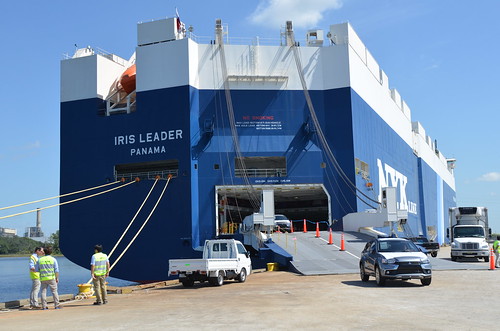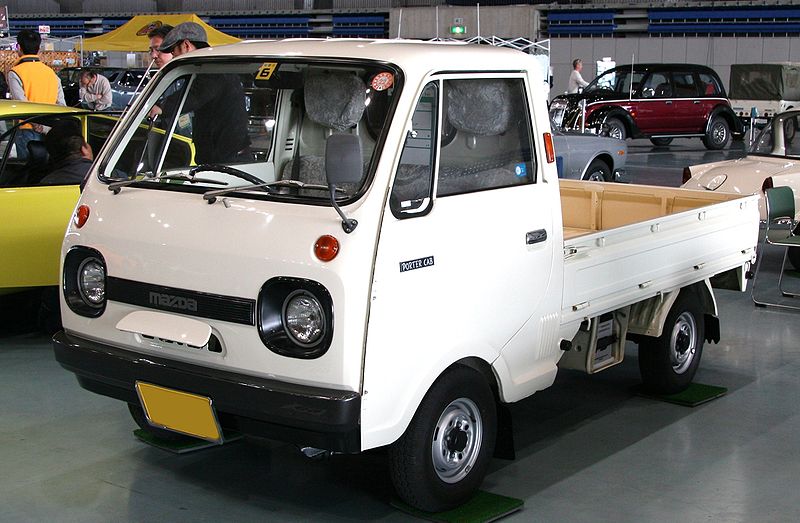Kei trucks are mainly from Japan, which means that you will need to have a way in which to get your vehicle to the United States. The most common way is by shipping yard. Therefore, it is critical that you understand the process of how to import a Kei Truck into the U.S. Before you begin this process; it is equally important to note that there are currently several variables which could affect your shipping. Freight delays as well as legislation pertaining to importation are subject to change from time to time. It is recommended that you seek a broker and legal assistance when importing your vehicle. This article is in no ways to be considered legal documentation on how to import a Kei truck. It is to be used as a guide only. With that stated, here are 5 steps to importing a Kei truck.

Step One: Know your Quotes
The first step which you must take is to find a vehicle and to understand the quote for the vehicle. There are two ways in which Kei Trucks are quoted. The first is CIF. This means that there will be arrangements for the Kei Truck to get to the port, shipping, and insurance. It is basically the complete package. FOB is the other type of quote and means that the quote is for the Kei truck to get to the outbound port only and that the buyer is responsible for obtaining shipping and insurance from the port. It is recommended that you seek CIF quotes when looking to import a Kei Truck.
In addition to the quote being CIF or FOB, you should also know how the Kei truck will be shipped. If you choose to have it encased, then you could end up with a delay at customs. This is especially true if the vehicle is stopped for x-ray, or if there are any holds to crates from Japan. RORO is the preferred method. This simply means that the vehicle is rolled on to the ship and rolled off. There is no crate. You will need to have the vehicle cleaned prior to shipping to avoid delays and cleaning cost.
Step two: Get a BOL
When you pay for your Kei truck, you will need to ensure that you get a Bill of Landing (BOL) from the exporter. This BOL then needs to be given to the shipping line, and a copy needs to be kept for your records, especially if you plan to register the vehicle with the DOT upon arrival. The shipping line will contact you once they have the vehicle. Once they have the BOL and you have the Kei truck gained by the shipping line, then you will get an estimated arrival date. Collection fees will be acquired during this time. Collection fees will cover port charges and any fees which the shipping line may have.
Step three: Fill out the correct forms
Importation of a vehicle from Japan requires several forms to be filled out. This is where an export and import broker really comes in handy. However, you can choose to download and fill out the forms for yourself. Remember that you must confirm that you have all the appropriate forms before the vehicle is shipped from port. The forms which you will need are the CBP for 7501. You will need to know the transmission, the engine type, and the estimated arrival date. If giving an informal entry summary, you may not be required to fill out a CB 7501. Check with your broker to see if this applies.
After you have this form filled, you will need to fill out a declaration form and an EPA form. The declaration form is known as HS-7 short form. The form is relatively self-explanatory. Such things that you will need to know are the port of entry, the customs port code, the customs entry number, the entry date, the name of the vehicle, the model, and the year. EPA forms are known as 3520s and are equally self-explanatory. Check with your state for these forms, check online for help, or contact your import export broker.
Step 4: File an Import Security Filing
This is a requirement for any imported cargo from the sea. You must submit cargo and carrier information to the CBP. The form, a 10+2, is required for all Kei trucks, regardless of whether you intend to use the vehicle for on-road or off-road purposes. An ISF, as it is referred, should be filed within 24 hours of the Kei Truck being loaded at the foreign port. A full ISF form must be completed and filed within 48 hours of the ship’s departure.

Step 5: Obtaining your Kei Truck
When the forms are filled and the Kei Truck is shipped to the dock, it will then go to the place of unloading. You will be required to give the shipping holder a copy of your BOL and CBL for 7501 to get your vehicle. You may be required to have special clearance to get into the area in which your Kei Truck is being held. In many instances, the imported vehicle will be within a military base. It is strongly recommended that you get a clearance pass within 48 hours of the expected pick update. Contact the shipping yard to find out the regulations for obtaining your vehicle.
Other considerations to import a Kei Truck
Depending upon the type of Kei truck that you wish to have imported, there may be additional stipulations. Primarily, Kei trucks that are under 25 years old will need to meet the safety and emission standards of U.S. vehicles. Therefore, many choose to purchase older Kei Trucks. Vehicles which are over 25 years may fall under the exemption of the classic vehicle clause. If you are purchasing for off-road or agricultural uses, you may have additional exemptions. Regulations vary from state to state, so it is crucial that you check with your taxation and local importation authority prior to starting the importation process.
